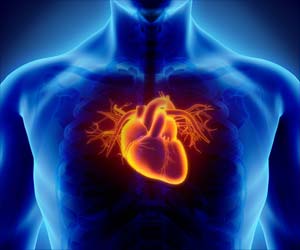Syncope is most commonly perceived as an episode of fainting. Now a new definition makes its diagnosis more precise and now dependent on a specific cause.
Syncope is most commonly perceived as an episode of fainting. Now a new definition makes its diagnosis more precise and now dependent on a specific cause.
New 2009 ESC Guidelines for the Diagnosis and Management of Syncope define syncope as "a transient loss of consciousness due to transient global cerebral hypoperfusion characterized by rapid onset, short duration and spontaneous complete recovery".(1)The definition, says Professor Angel Moya from the University Hospital Vall d'Hebrón in Barcelona and Chair of the Guideline Task Force, now includes an aetiological requirement of reduced cerebral blood flow, which is new to the 2009 Guidelines. Indeed, he explains, a sudden cessation of cerebral blood flow for as short as six to eight seconds is sufficient to cause complete loss of consciousness. "Without this diagnostic addition," he says, "the definition of syncope becomes wide enough to include other disorders such as epileptic seizures and concussion - in fact, would be nothing more than 'loss of consciousness', irrespective of mechanism and duration."
The Guidelines note that syncope is also associated with a decrease in systolic blood pressure to 60 mmHg or lower, which in turn is determined by cardiac output and total vascular resistance; a fall in either can cause syncope, but a combination of both mechanisms is often present.
The new definition helps provide – for the first time – a clearer picture of who and how many are affected by this common condition, and what its longer-term health implications are. The Guidelines identify three common types of syncope, all with the same presentation (sudden loss of consciousness) but with different causes and different risk profiles.
- Reflex syncope occurs when cardiovascular reflexes normally used to control circulation become suddenly altered, resulting in a fall in blood pressure and cerebral blood flow. This type includes the common faint ("vasovagal syncope", VVS), which is usually preceded by emotional stress and its attendant symptoms (sweating, nausea). The classical form of VVS nearly always begins in young people as an isolated, benign episode, which makes it distinct from other forms of syncope; for example, episodes starting in older age are often associated with cardiovascular or neurological disorders (such as orthostatic hypotension as described below)
- Orthostatic hypotension, sometimes known as "postural hypotension", unlike reflex syncope is usually a recurring event: blood pressure always falls on standing up, and syncope occurs. The cause, say the Guidelines, is a "circulatory abnormality" of which syncope is just one of several other symptoms (dizziness, fatigue, palpitations, visual disturbance and even back pain). Classically, systolic BP falls by at least 20 mmHg within three minutes of standing, and diastolic BP by at least 10 mmHg. Advertisement
- Cardiac syncope is most commonly caused by arrhythmias, which reduce cardiac output and cerebral blood flow. In such cases, the Guidelines stress that, "when an arrhythmia is the primary cause of syncope, it should be specifically treated".
Applying these definitions to everyday prevalence, Professor Richard Sutton of St Mary's Hospital, Imperial College, London, and Co-chair of the Guidelines Task Force, describes reflex syncope as "common" in the general population, with around 50% of us experiencing a VVS over a lifetime.(2) Prognosis is nearly always good.
Advertisement
The Guidelines also put new emphasis on the increasing role of a diagnostic strategy based on prolonged monitoring, and not just on conventional laboratory testing. Implantable loop recorders, for example, which have a battery life of up to 36 months and a memory which stores ECG recordings, have already been shown to be cost-effective in the diagnosis of unexplained syncope, with a high correlation between symptoms and stored ECG data.
Both Professors Moya and Sutton thus believe there are three strong reasons for the new Guidelines: to prevent misdiagnosis (and inappropriate treatment, which is often expensive); to improve quality of life; and to recognise and reduce longer-term risk (especially in cardiac syncope). Because of the multifactorial nature of syncope as identified in the new diagnostic definitions, the Guidelines underline the important role of a dedicated multi-skilled "syncope unit", which would provide guideline-based assessment, risk stratification and treatment.
DrivingAmong the quality of life questions addressed specifically by the Guidelines is whether those with syncope should drive. The new data "suggest that the risk of vehicle accident in patients with a history of syncope is not different from the general population of drivers without syncope". The Guidelines recommend for non-professional drivers:
- no restrictions following single or mild reflex syncope events
- no restrictions after recurrent and severe reflex syncope events once symptoms are controlled
- but restrictions in cardiac syncope until successful treatment has been established (with modifications for those with an implanted pacemaker or cardioverter-defibrillator)
For public safety, say the Guidelines, "the risk of syncope-mediated driving accidents (0.8% per year) appeared to be substantially less than in young (16 years) and in elderly drivers (high risk accident groups)".
Source-Eurekalert
RAS









